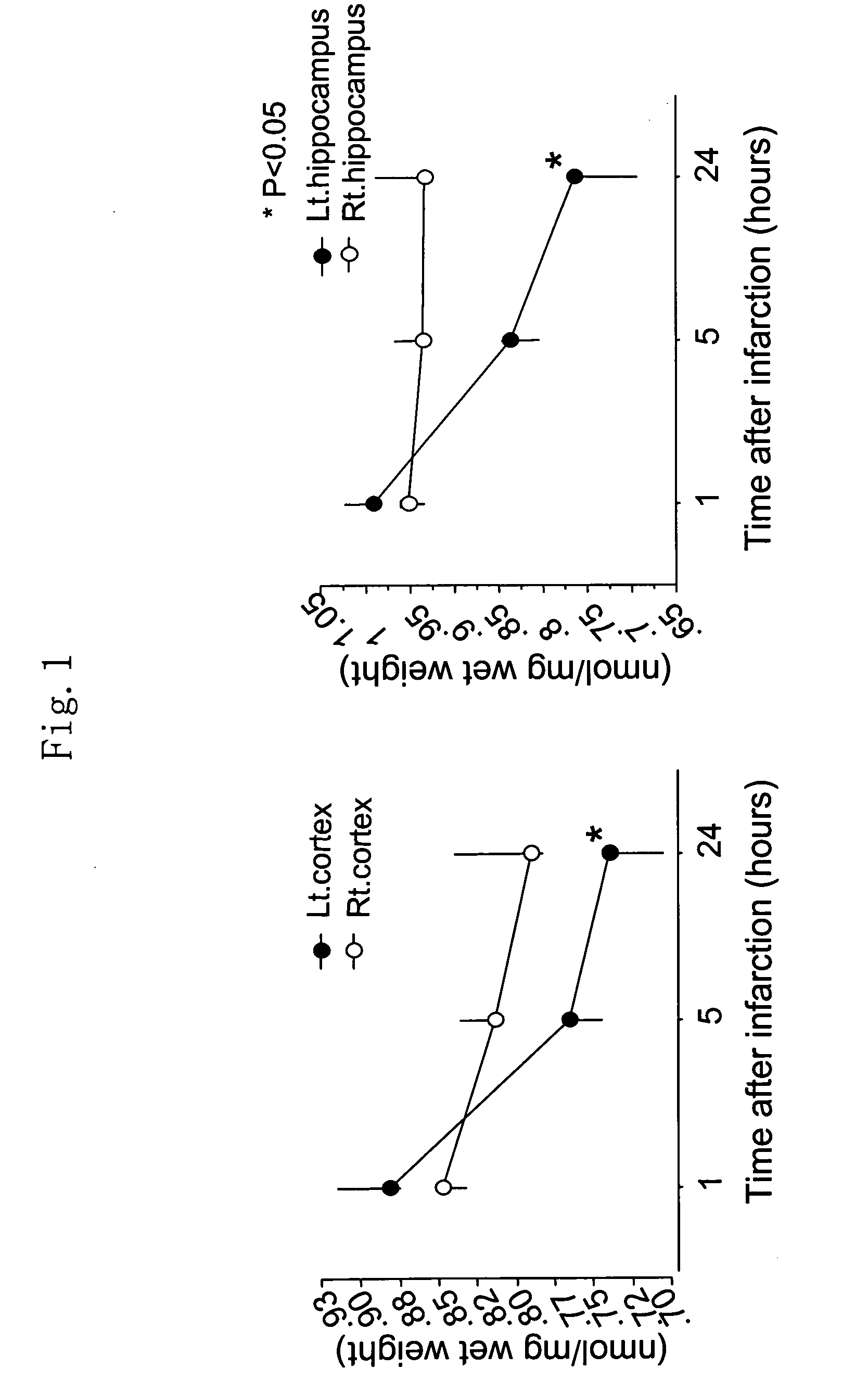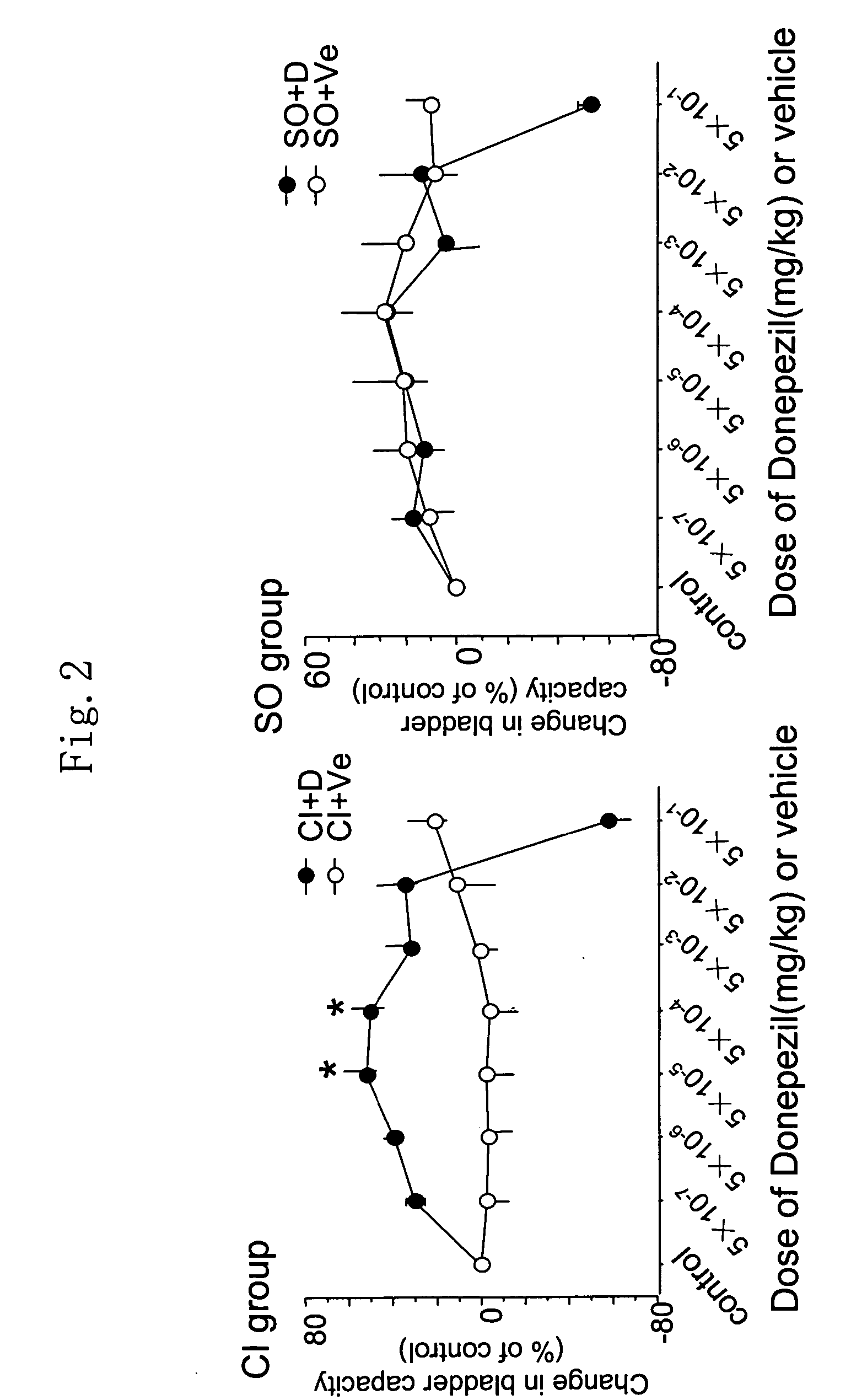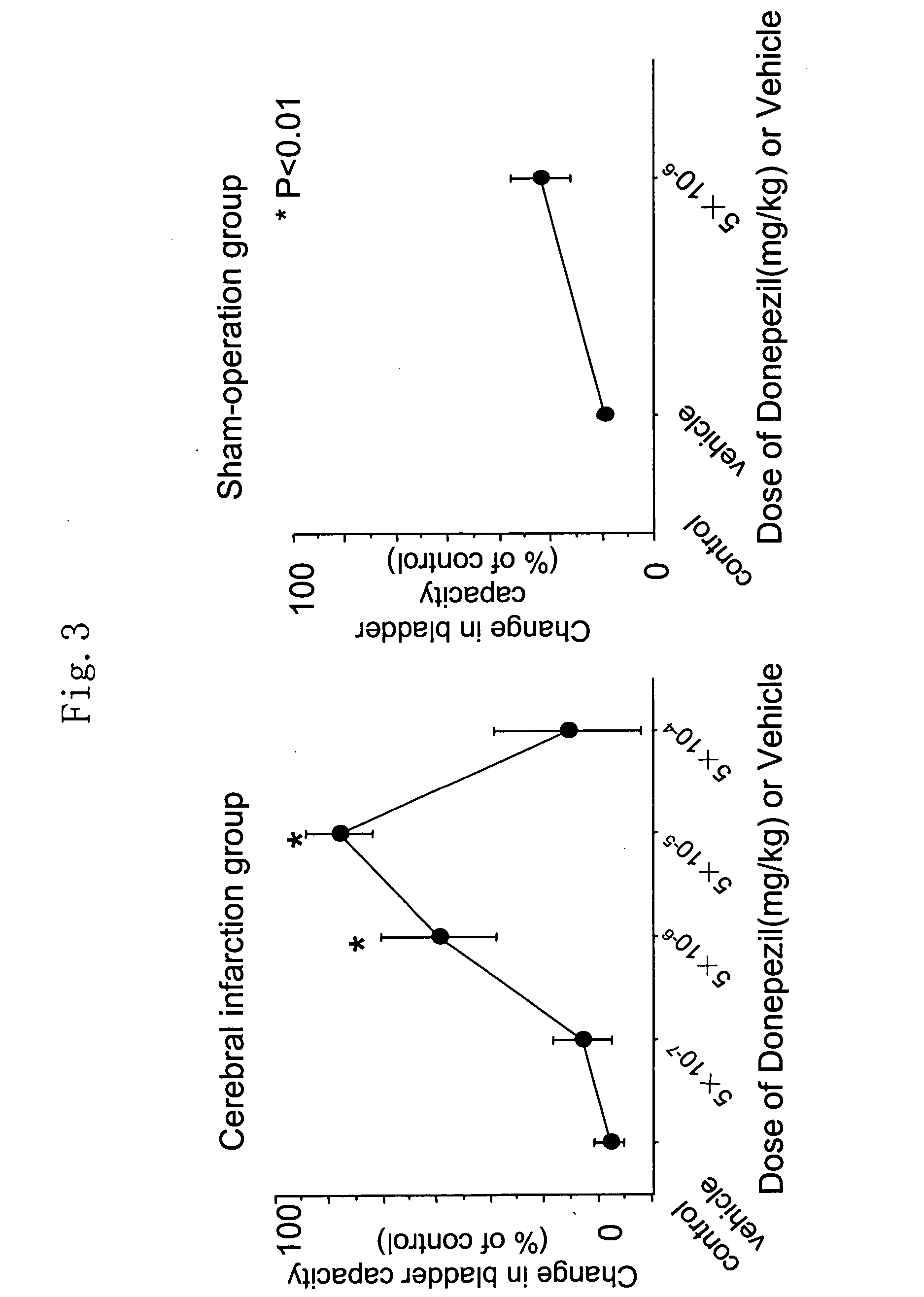Therapeutic agent for overactive bladder resulting from cerebral infarction
a cerebral infarction and overactive bladder technology, applied in the field of agents, can solve problems such as meliorating overactive bladder
- Summary
- Abstract
- Description
- Claims
- Application Information
AI Technical Summary
Benefits of technology
Problems solved by technology
Method used
Image
Examples
example 1
Production of Donepezil Hydrochloride
(a) Synthesis of 1-benzyl-4-piperidine carboaldehyde
[0223]
[0224] 26.0 g of methoxymethylenetriphenylphosphonium chloride was suspended in 200 ml anhydrous ether, and 1.6 M n-butyllithiumhexane solution was added dropwise at room temperature. After stirring at room temperature for 30 minutes, the resultant was cooled to 0° C., and 14.35 g 1-benzyl-4-piperidone in 30 ml anhydrous ether solution was added. After stirring at room temperature for 3 hours, insoluble matter was filtered out and the filtrate was concentrated under reduced pressure. The obtained residue was dissolved in ether and extracted with 1N hydrochloric acid. Following adjustment of pH to 12 with sodium hydroxide solution, the resultant was extracted with methylene chloride. The resultant was dried with magnesium sulfate, and concentrated under reduced pressure. The obtained residue was purified through a silica gel column, thereby obtaining 5.50 g of oily substance (yield 33%). ...
example 2
Cerebral Infarction Model
[0237] 10-week-old female SD rats (purchased from Sankyo Labo Service Co.) were subjected to cystostomy under anesthesia of 1.5% halothane. They were further subjected to cervical incision, and a nylon suture was inserted into their left internal carotid to produce cerebral infarction by middle cerebral artery embolization. These cerebral infarction rats were restrained in Bollman cages in waking state. Measurement of the pressures within their bladders indicated significant decrease in the bladder capacities (Yokoyama O, Yoshiyama M, Namiki M, de Groat W C: Influence of anesthesia on bladder hyperactivity induced by middle cerebral artery occlusion in the rat. Am J Physiol 273: R1900-R1907, 1997). On the other hand, decrease in bladder capacity was not seen in sham-operation rats which were just subjected to common carotid decortication. In the examples below, experiments were conducted using overactive bladder model of this cerebral infarction model.
Expe...
example 3
Experiments Using Cerebral Infarction Models: Intravenous Administration of Donepezil Hydrochloride
[0240] Donepezil hydrochloride (ARICEPT® supplied from Eisai Co., Ltd.) was dissolved in saline, which was intravenously administered to overactive bladder model rats at 5×10−7 mg / kg to 5×10−1 mg / kg every 30 minutes. Bladder capacities of rats administered with various concentrations of donepezil hydrochloride were determined.
[0241] Results are shown in FIG. 2. In FIG. 2, changes in the bladder capacities upon administration of donepezil hydrochloride (“+D”) or vehicle (“+Ve”) at respective concentrations are shown as percentages of change from that of a control. The left panel shows the results for cerebral infarction model rats (CI group) while the right panel shows the results for sham-operation rats (SO group). As a result, transvenous administration of donepezil hydrochloride to the cerebral infarction model rats (CI group) increased the bladder capacities (FIG. 2). Donepezil hy...
PUM
| Property | Measurement | Unit |
|---|---|---|
| Pressure | aaaaa | aaaaa |
| Therapeutic | aaaaa | aaaaa |
| Inhibition | aaaaa | aaaaa |
Abstract
Description
Claims
Application Information
 Login to View More
Login to View More - R&D
- Intellectual Property
- Life Sciences
- Materials
- Tech Scout
- Unparalleled Data Quality
- Higher Quality Content
- 60% Fewer Hallucinations
Browse by: Latest US Patents, China's latest patents, Technical Efficacy Thesaurus, Application Domain, Technology Topic, Popular Technical Reports.
© 2025 PatSnap. All rights reserved.Legal|Privacy policy|Modern Slavery Act Transparency Statement|Sitemap|About US| Contact US: help@patsnap.com



